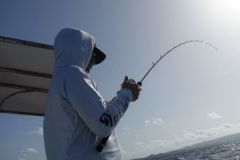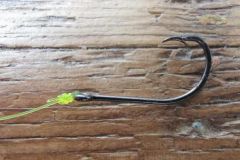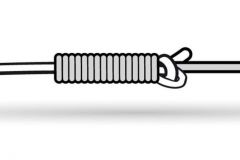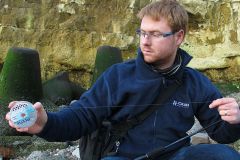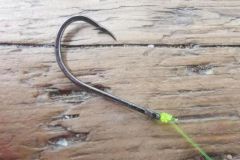Hard lures need freedom to swim as well as possible. Not being a fan of staples, I use different knots that have one thing in common: they let the swimmer's eye slide freely through the loop of the connecting knot. Of course, this knot can also be used with a soft lure.
For greater visibility, the knot is made with 50/100 fluoro.
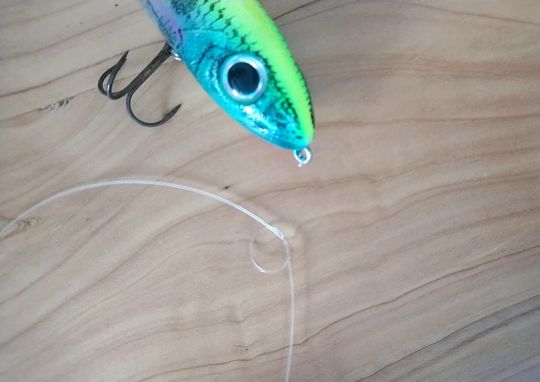
- Step 1: Tie a simple knot in your fluoro. Tie it loosely (about 1 cm in diameter), leaving a good ten centimeters or so hanging over the top.
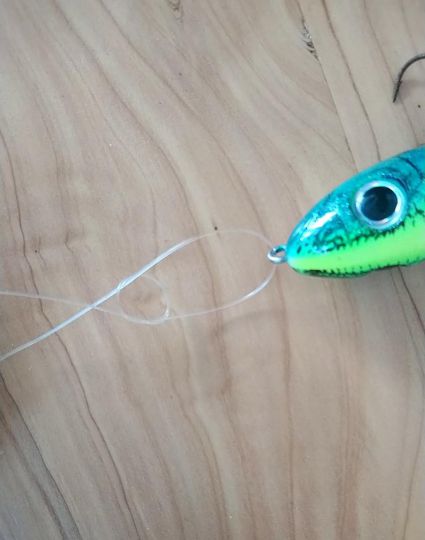
- Step 2: Pass the free strand through the lure's eyelet and then through the knot formed on the main strand. From this point on, the aim is to achieve a spoon knot .
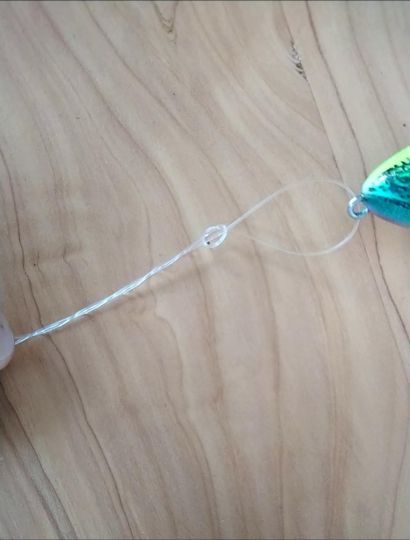
- Step 3: Make 3 or 4 turns with the free strand around the main strand, working your way up "towards the reel".

- Step 4: Pass the free strand through the initial knot.
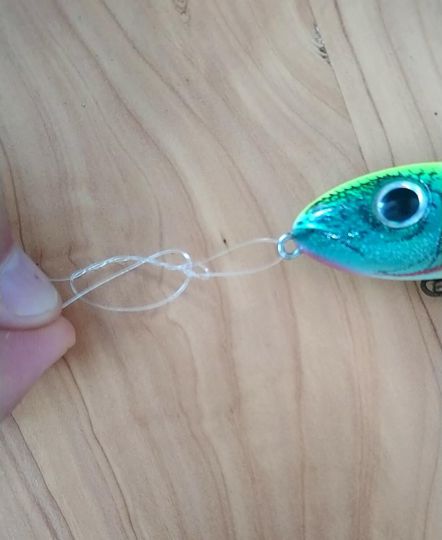
- Step 5: A new loop is now formed, pass the free strand inside.
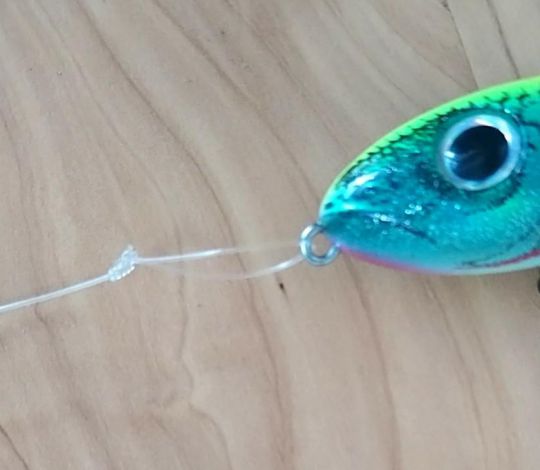
Step 6
- Moisten your knot with saliva.
- Tighten the knot by pulling on the main strand, then on the free strand.
- Cut the free strand 2-3 mm from the knot.
Your node is now complete.
Advantages :
- Very solid
- Gives a lot of freedom to your hard lure.
Disadvantages :
- A little time-consuming
- Very difficult to make with very large diameters (70-100/100). In this case, I prefer a staple or a "knot-in-knot" knot

 /
/ 



